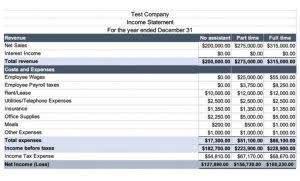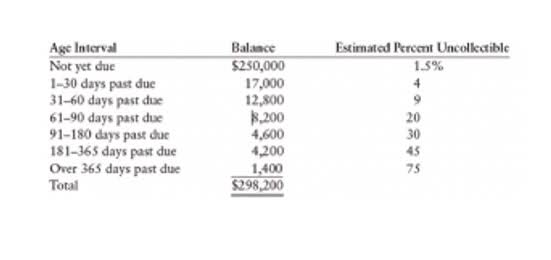After all fixed costs have been covered, this provides an operating profit. If the annual volume of Product A is 200,000 units, Product A sales revenue is $1,600,000. A subcategory of fixed costs is overhead costs that are allocated in GAAP accounting to inventory and cost of goods sold. This allocation of fixed overhead isn’t done for internal analysis of contribution margin. Fixed costs are business expenses that do not change regardless of changes that may occur in production or sales.
What does contribution margin tell you about your business?
Unlike net income, contribution margin provides a look at individual product metrics rather than overall business numbers. It’s a valuable measurement that empowers you to determine how profitable individual products are for your business. Calculating the contribution margin for each product is one solution to business and accounting problems arising from not doing enough financial analysis. Calculating your contribution margin helps you find valuable business solutions through decision-support analysis. However, it can also be considered a variable cost because the increased number of units that needed to be produced had a direct impact on the decision to hire temporary workers. On the other hand, managers could add new product lines if they have a high marginal profit per unit sold.
Contribution Margin Analysis Per Unit Example
Buying items such as machinery are a typical example of a fixed cost, specifically a one-time fixed cost. Regardless of how much it is used and how many units are sold, its costs remains the same. However, these fixed costs become a smaller percentage of each unit’s cost as the number of units sold increases. It provides one way to show the profit potential of a particular product offered by a company and shows the portion of sales that helps to cover the company’s fixed costs. Any remaining revenue left after covering fixed costs is the profit generated.
Contribution margin as a measure of efficiency in the operating room
- Contribution margin (CM) is a financial measure of sales revenue minus variable costs (changing with volume of activity).
- If the company’s contribution margin ratio is higher than the basis for comparison, the result is favorable.
- Some income statements report net sales as the only sales figure, while others actually report total sales and make deductions for returns and allowances.
- A university van will hold eight passengers, at a cost of \(\$200\) per van.
This means that $15 is the remaining profit that you can use to cover the fixed cost of manufacturing umbrellas. Also, you can use the contribution per unit formula to determine the selling price of each umbrella. That is, fixed costs remain unaffected even if there is no production during a particular period. Fixed costs are used in the break even analysis to determine the price and the level of production.
Contribution Margin Calculation Example
It is the amount of income available for contributing to fixed costs and profit and is the foundation of a company’s break-even analysis. The contribution margin is computed by using a contribution income statement, a management accounting version of the income statement that has been reformatted to group together a business’s fixed and variable costs. A key characteristic of the contribution margin is that it remains fixed on a per unit basis irrespective of the number of units manufactured or sold. On the other hand, the net profit per unit may increase/decrease non-linearly with the number of units sold as it includes the fixed costs. The contribution margin ratio, often abbreviated as “CM ratio”, expresses the residual profits generated from each unit of product sold, once all variable costs are subtracted from product revenue.
Preference is given to products that provide a high contribution margin. The contribution margin ratio is calculated as (Revenue – Variable Costs) / Revenue. Investors examine contribution https://www.bookkeeping-reviews.com/ margins to determine if a company is using its revenue effectively. A high contribution margin indicates that a company tends to bring in more money than it spends.
The contribution margin tells us whether the unit, product line, department, or company is contributing to covering fixed costs. Alternatively, companies that rely on shipping and delivery companies that use driverless technology may be faced with an increase in transportation or shipping costs (variable costs). These costs may be higher because technology is often more expensive when it is new than it will be in the future, when it is easier and more cost effective to produce and also more accessible. 12 cash flow management strategies for small business A good example of the change in cost of a new technological innovation over time is the personal computer, which was very expensive when it was first developed but has decreased in cost significantly since that time. The same will likely happen over time with the cost of creating and using driverless transportation. Knowing how to calculate the contribution margin is an invaluable skill for managers, as using it allows for the easy computation of break-evens and target income sales.
The CVP relationships of many organizations have become more complex recently because many labor-intensive jobs have been replaced by or supplemented with technology, changing both fixed and variable costs. For those organizations that are still labor-intensive, the labor costs tend to be variable costs, since at higher levels of activity there will be a demand for more labor usage. The contribution margin shows how much additional revenue is generated by making each additional unit product after the company has reached the breakeven point. In other words, it measures how much money each additional sale “contributes” to the company’s total profits. In 2022, the product generated $1 billion in revenue, with 20 million units sold, alongside $400 million in variable costs. To calculate the contribution margin, we must deduct the variable cost per unit from the price per unit.
The shoe company sells its popular shoes for a price of $100 per pair, and they produced and sold 1,000 pairs. It is the monetary value that each hour worked on a machine contributes to paying fixed costs. You work it out by dividing your contribution margin by the number of hours worked on any given machine.
Where C is the contribution margin, R is the total revenue, and V represents variable costs. It represents the incremental money generated for each product/unit sold after deducting the variable portion of the firm’s costs. The product revenue and number of products sold can be divided to determine the selling price per unit, which is $50.00 per product. The Contribution Margin is the revenue from a product minus direct variable costs, which results in the incremental profit earned on each unit of product sold. Furthermore, this ratio is also useful in determining the pricing of your products and the impact on profits due to change in sales. Accordingly, in the Dobson Books Company example, the contribution margin ratio was as follows.
Understanding how each product, good, or service contributes to the organization’s profitability allows managers to make decisions such as which product lines they should expand or which might be discontinued. When allocating scarce resources, the contribution margin will help them focus on those products or services with the highest margin, thereby maximizing profits. Knowing how to calculate contribution margin allows us to move on to calculating the contribution margin ratio.
Yes, it means there is more money left over after paying variable costs for paying fixed costs and eventually contributing to profits. Now, add up all the variable costs directly involved in producing the cupcakes (flour, butter, eggs, sugar, milk, etc). Leave out the fixed costs (labor, electricity, machinery, utensils, etc). The fixed costs of $10 million are not included in the formula, however, it is important to make sure the CM dollars are greater than the fixed costs, otherwise, the company is not profitable.
Investors use many different indicators and thoroughly examine a company’s financials before deciding to invest in a company. The contribution margin of a company’s product lines is one particular factor investors may look at when researching a company. Usually, the products with the higher contribution margin will be allocated more resources because they will produce greater profits than if the same resources were used for the lower contribution margin product. Even if the company temporarily shut down and sold no shoes, they would still have to pay the $20,000. That being so, the $20,000 would not be used to calculate the contribution margin. The first step here is to differentiate between fixed and variable expenses.
Remember, the per-unit variable cost of producing a single unit of your product in a particular production schedule remains constant. The Indirect Costs are the costs that cannot be directly linked to the production. Indirect materials and indirect labor costs that cannot be directly allocated to your products are examples of indirect costs. Furthermore, per unit variable costs remain constant for a given level of production.
Variable costs fluctuate with the level of units produced and include expenses such as raw materials, packaging, and the labor used to produce each unit. The result of this calculation shows the part of sales revenue that is not consumed by variable costs and is available to satisfy fixed costs, also known as the contribution margin. If total fixed cost is $466,000, the selling price per unit is $8.00, and the variable cost per unit is $4.95, then the contribution margin per unit is $3.05. The break-even point in units is calculated as $466,000 divided by $3.05, which equals a breakeven point in units of 152,787 units. Contribution margin (CM) is a financial measure of sales revenue minus variable costs (changing with volume of activity). After variable costs of a product are covered by sales, contribution margin begins to cover fixed costs.
Sales revenue refers to the total income your business generates as a result of selling goods or services. Furthermore, sales revenue can be categorized into gross and net sales revenue. Fixed costs are the costs that do not change with the change in the level of output. In other words, fixed costs are not dependent on your business’s productivity. Direct Costs are the costs that can be directly identified or allocated to your products. For instance, direct material cost and direct labor cost are the costs that can be directly allocated with producing your goods.
In the past year, he sold $200,000 worth of textbook sets that had a total variable cost of $80,000. Thus, Dobson Books Company suffered a loss of $30,000 during the previous year. Furthermore, a higher contribution margin ratio means higher profits.
Instead of doing contribution margin analyses on whole product lines, it is also helpful to find out just how much every unit sold is bringing into the business. This is because fee-for-service hospitals have a positive contribution margin for almost all elective cases mostly due to a large percentage of OR costs being fixed. For USA hospitals not on a fixed annual budget, contribution margin per OR hour averages one to two thousand USD per OR hour. To resolve bottlenecks, contribution margin can be used to decide which products offered by the business are more profitable and, therefore, more advantageous to produce, given limited resources.
You can use the contribution margin calculator using either actual units sold or the projected units to be sold. Thus, the total manufacturing cost for producing 1000 packets of bread comes out to be as follows. In the most recent period, it sold $1,000,000 of drum sets that had related variable expenses of $400,000.
In accounting, contribution margin is the difference between the revenue and the variable costs of a product. It represents how much money can be generated by each unit of a product after deducting the variable costs and, as a consequence, allows for an estimation of the profitability of a product. Based on the contribution margin formula, there are two ways for a company to increase its contribution margins; They can find ways to increase revenues, or they can reduce their variable costs. Fixed cost are costs that are incurred independent of how much is sold or produced.
Analyzing the contribution margin helps managers make several types of decisions, from whether to add or subtract a product line to how to price a product or service to how to structure sales commissions. Before making any major business decision, you should look at other profit measures as well. For the month of April, sales from the Blue Jay Model contributed \(\$36,000\) toward fixed costs. Looking at contribution margin in total allows managers to evaluate whether a particular product is profitable and how the sales revenue from that product contributes to the overall profitability of the company. In fact, we can create a specialized income statement called a contribution margin income statement to determine how changes in sales volume impact the bottom line. The contribution margin is important because it helps your business determine whether selling prices at least cover variable costs that change depending on the activity level.
Analysts calculate the contribution margin by first finding the variable cost per unit sold and subtracting it from the selling price per unit. As mentioned above, contribution margin refers to the difference between sales revenue and variable costs of producing goods or services. This resulting margin indicates the amount of money available with your business to pay for its fixed expenses and earn profit. The contribution margin should be relatively high, since it must be sufficient to also cover fixed expenses and administrative overhead. Also, the measure is useful for determining whether to allow a lower price in special pricing situations. The ratio is also useful for determining the profits that will arise from various sales levels (see the following example).
This is the net amount that the company expects to receive from its total sales. Some income statements report net sales as the only sales figure, while others actually report total sales and make deductions for returns and allowances. Either way, this number will be reported at the top of the income statement. In our example, a ratio of 36.97% means that every dollar in sales contributes approximately $0.37 (thirty-seven cents) toward fixed costs. The higher your company’s ratio result, the more money it has available to cover the company’s fixed costs or overhead. The contribution margin ratio is also known as the profit volume ratio.
Also important in CVP analysis are the computations of contribution margin per unit and contribution margin ratio. You might wonder why a company would trade variable costs for fixed costs. One reason might be to meet company goals, such as gaining market share. Other reasons include being a leader in the use of innovation and improving efficiencies.
Thus, the contribution margin ratio expresses the relationship between the change in your sales volume and profit. So, it is an important financial ratio to examine the effectiveness of your business operations. Now, this situation can change when your level of production increases. As mentioned above, the per unit variable cost decreases with the increase in the level of production.
Total contribution margin (TCM) is calculated by subtracting total variable costs from total sales. Gross margin is calculated before you deduct operating expenses shown in the income statement to reach operating income. Each profit measure can be expressed as total dollars or as a ratio that is a percentage of the total amount of revenue. Recall that Building Blocks of Managerial Accounting explained the characteristics of fixed and variable costs and introduced the basics of cost behavior. Let’s now apply these behaviors to the concept of contribution margin.
Profit is any money left over after all variable and fixed costs have been settled. It means there’s more money for covering fixed costs and contributing to profit. Also, it is important to note that a high proportion of variable costs relative to fixed costs, typically means that a business can operate with a relatively low contribution margin. In contrast, high fixed costs relative to variable costs tend to require a business to generate a high contribution margin in order to sustain successful operations. In order to perform this analysis, calculate the contribution margin per unit, then divide the fixed costs by this number and you will know how many units you have to sell to break even.
Contribution margin may also be expressed as a ratio, showing the percentage of sales that is available to pay fixed costs. The contribution margin ratio refers to the difference between your sales and variable expenses expressed as a percentage. That is, this ratio calculates the percentage of the contribution margin compared to your company’s net sales. For example, if sales double, variable costs double too, and vice versa. Direct variable costs include direct material cost and direct labor cost. In this case, the business would have to take a look at its variable costs and see if any changes could be made to cut costs and increase the marginal profit per unit of sale.
Management accountants identify financial statement costs and expenses into variable and fixed classifications. Variable costs vary with the volume of activity, such as the number of units of a product produced in a manufacturing company. Jump, Inc. is a sports footwear startup which currently sells just one shoe brand, A. The sales price is $80, variable costs per unit is $50 and fixed costs are $2,400,000 per annum (25% of the which are manufacturing overhead costs) . This demonstrates that, for every Cardinal model they sell, they will have \(\$60\) to contribute toward covering fixed costs and, if there is any left, toward profit.
Companies may have significant fixed costs that need to be factored in. To illustrate how this form of income statement can be used, contribution margin income statements for Hicks Manufacturing are shown for the months of April and May. For example, assume that the students are going to lease vans from their university’s motor pool to drive to their conference. A university van will hold eight passengers, at a cost of \(\$200\) per van. If they send one to eight participants, the fixed cost for the van would be \(\$200\). If they send nine to sixteen students, the fixed cost would be \(\$400\) because they will need two vans.
Many companies use metrics like the contribution margin and the contribution margin ratio, to help decide if they should keep selling various products and services. For example, if a company sells a product that has a positive contribution margin, the product is making enough money to cover its share of fixed costs for the company. The contribution margin ratio takes the analysis a step further to show the percentage of each unit sale that contributes to covering the company’s variable costs and profit.
If a company uses the latest technology, such as online ordering and delivery, this may help the company attract a new type of customer or create loyalty with longstanding customers. In addition, although fixed costs are riskier because they exist regardless of the sales level, once those fixed costs are met, profits grow. All of these new trends result in changes in the composition of fixed and variable costs for a company and it is this composition that helps determine a company’s profit. The contribution margin formula is calculated by subtracting total variable costs from net sales revenue. One of the important pieces of this break-even analysis is the contribution margin, also called dollar contribution per unit.






